Mastering the Aroon Indicator entails advanced strategies for in-depth market analysis, offering insights on trend identification, potential reversals, and risk management. The Aroon Indicator, developed by Tushar Chande, evaluates trend strength and highlights local highs and lows. Signals like Aroon Up crossing 70 indicate bullish trends, while crossovers suggest trend changes. Combining the Aroon Indicator with tools like Moving Averages enhances analysis precision. This indicator aids in pinpointing trends, essential for strategic entry and exit decisions, helping traders improve outcomes. Understanding Aroon's calculations, interpreting signals, and employing strategic techniques are key to mastering this indicator effectively.
Aroon Indicator Overview
Developed by Tushar Chande in 1995, the Aroon Indicator is a powerful tool utilized in trading to identify trends and price movement direction. Consisting of two lines, namely Aroon Up and Aroon Down, each ranging from 0 to 100, this indicator offers insights into trend strength and potential changes in the market. Traders rely on the Aroon Indicator to pinpoint local highs and lows, determine different trend stages, and forecast potential trend reversals accurately.
Incorporating the Aroon Indicator into trading strategies involves monitoring crossovers between the Aroon Up and Aroon Down lines, as well as observing readings above 70% for indications of bullish trends and below 30% for bearish trends. By leveraging these key thresholds, traders can make well-informed decisions regarding their positions in the market. Additionally, the Aroon Indicator can be seamlessly integrated into various trading platforms such as MT4, MT5, and LiteFinance Online Terminal, offering traders the flexibility to adjust settings based on different timeframes to suit their trading preferences and objectives.
Understanding Aroon Indicator Calculation
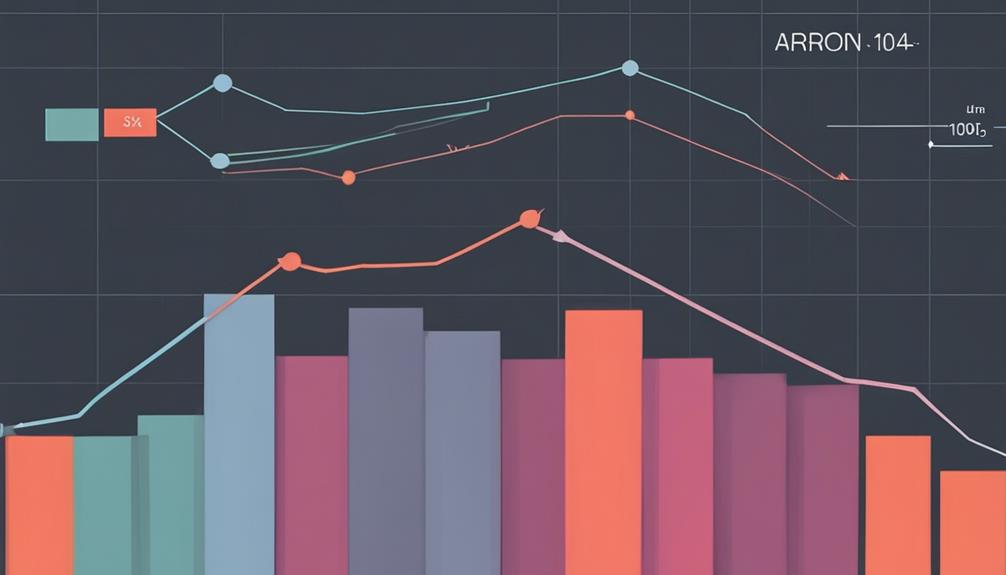
Calculating the Aroon Indicator involves determining the Aroon Up and Aroon Down values based on specific formulas that measure the time elapsed since the highest high and lowest low within a designated period. The Aroon Indicator consists of two components:
- Aroon Up is calculated as ((N – Periods since N period High) / N) x 100.
- Aroon Down is calculated as ((N – Periods since N period Low) / N) x 100.
The Aroon Indicator measures time since the highest high and lowest low, not price changes. Aroon Up and Aroon Down values range from 0 to 100, indicating recent highs and lows.
These calculations help traders analyze the trend strength and potential trend changes within a specific period. By understanding how the Aroon Indicator is calculated, traders can effectively utilize this tool in their trading strategies to make informed decisions based on the indicator's insights.
Interpreting Aroon Indicator Signals
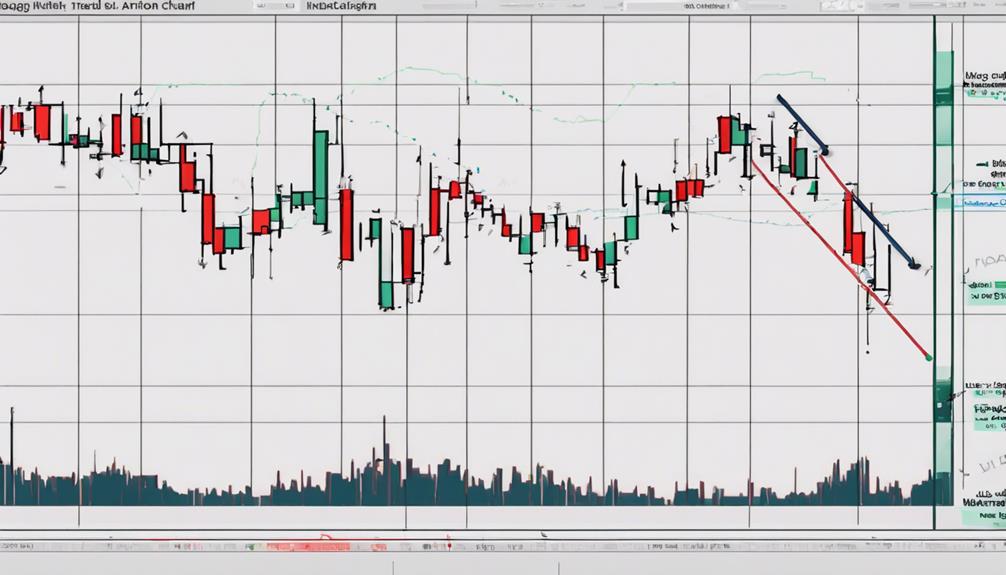
When interpreting Aroon Indicator signals, it is essential to take into account signal strength levels, trend change indications, and timing entry and exit points.
Aroon Up crossing above Aroon Down or vice versa can provide insights into potential market trends, while levels above 70 or below 30 indicate the strength of the trend.
Understanding the nuances of these signals can help traders make informed decisions and optimize their trading strategies effectively.
Signal Strength Levels
The interpretation of Aroon Indicator signals, particularly in relation to signal strength levels, plays an essential role in evaluating market trends and potential trading opportunities.
- Aroon Up crossing above 70 signifies a strong bullish trend.
- Aroon Down crossing above 70 indicates a strong bearish trend.
- Crossovers between Aroon Up and Aroon Down lines hint at potential trend changes.
- Aroon Indicator values ranging from 0 to 100 provide insights into trend strength levels.
Analyzing these signal strength levels can help traders identify the prevailing market sentiment, assess trend strength, and make informed decisions regarding entry and exit points in the market. By understanding these aspects, traders can navigate the complexities of the market more effectively.
Trend Change Indications
Building on the insights gained from analyzing signal strength levels, interpreting Aroon Indicator signals for trend change indications provides traders with valuable information for making strategic trading decisions. Aroon Up crossing above Aroon Down signifies a potential bullish trend change, while high Aroon Up and low Aroon Down levels indicate a strong uptrend shift, possibly triggering a buy signal. Conversely, Aroon Down surpassing Aroon Up suggests a bearish trend reversal. Additionally, the convergence of Aroon lines may hint at trend exhaustion and an upcoming reversal, making Aroon signals critical for timely entry and exit decisions. To better understand these indications, refer to the table below:
| Aroon Indicator Signals | Interpretation |
|---|---|
| Aroon Up crosses Aroon Down | Bullish Trend Change |
| High Aroon Up, Low Aroon Down | Strong Uptrend Shift |
| Aroon Down crosses Aroon Up | Bearish Trend Reversal |
| Convergence of Aroon Lines | Trend Exhaustion, Reversal |
| Aroon Signals | Essential for Entry and Exit Decisions |
Timing Entry and Exit
Utilizing the Aroon Indicator signals effectively can provide traders with valuable insights for precise timing of entry and exit points in the market. When interpreting Aroon Indicator signals, traders should pay close attention to Aroon Up and Aroon Down crosses for best decision-making.
Here are key considerations for timing entry and exit points:
- Aroon Up crossing above Aroon Down signifies a bullish trend entry point.
- High convergence between Aroon Up and Aroon Down lines may indicate a potential trend reversal.
- Combine Aroon Indicator with other technical tools for signal confirmation.
- Integrate Aroon with Moving Averages to enhance trend confirmation.
Aroon Indicator Strategies
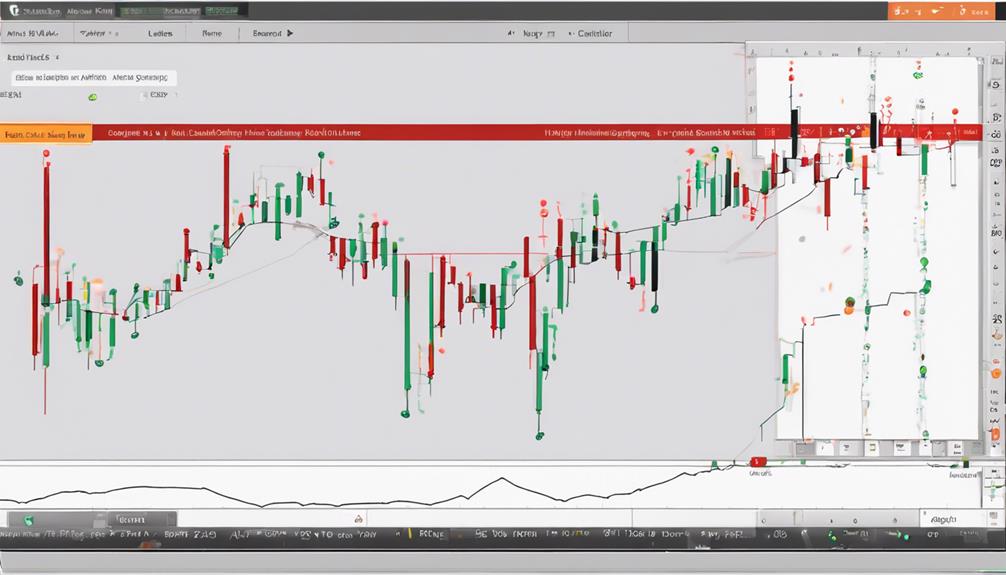
Implementing Aroon Indicator strategies involves utilizing trend identification techniques and selecting appropriate timeframes to optimize trading decisions.
By understanding how the Aroon Up and Aroon Down lines interact, traders can pinpoint potential trend reversals and capitalize on market opportunities.
Pairing these strategies with complementary technical analysis tools can provide a thorough approach to market analysis and improve trading outcomes.
Trend Identification Techniques
Employing the Aroon Indicator strategies for trend identification provides a systematic approach to analyzing market trends based on the Aroon Up and Aroon Down signals. The Aroon Indicator helps determine trend strength by evaluating the positioning of the Aroon Up and Aroon Down lines in relation to each other. It assists in recognizing trend beginnings and endings through the crossovers of these lines. Strong bullish trends are characterized by high Aroon Up readings coupled with low Aroon Down values. By utilizing the Aroon Indicator, traders and investors gain valuable insights into market direction and trend strength, enabling more informed decision-making for thorough market analysis.
- Aroon Indicator aids in identifying uptrends and downtrends.
- Trend strength is gauged by the relative positioning of Aroon Up and Aroon Down lines.
- Crossovers of these lines indicate potential trend reversals.
- High Aroon Up readings and low Aroon Down values signify strong bullish trends.
Timeframe Selection Tips
When considering the application of Aroon Indicator strategies, the selection of appropriate timeframes plays a critical role in optimizing trading decisions and trend analysis. For intraday trading with the Aroon Indicator, shorter timeframes like 5 or 15 minutes are preferred to capture quick trends and signals.
Conversely, longer timeframes such as daily or weekly are more suitable for swing trading and conducting thorough trend analysis using the Aroon Indicator. It is essential to adjust the timeframe settings based on the asset's volatility and align them with your trading strategy preferences.
To enhance trend identification and signal accuracy, utilizing multiple timeframes concurrently can provide a detailed view of trend changes and strength. Traders are encouraged to experiment with different timeframe combinations to determine the most effective setup that aligns with their trading style.
Aroon Indicator in Market Analysis
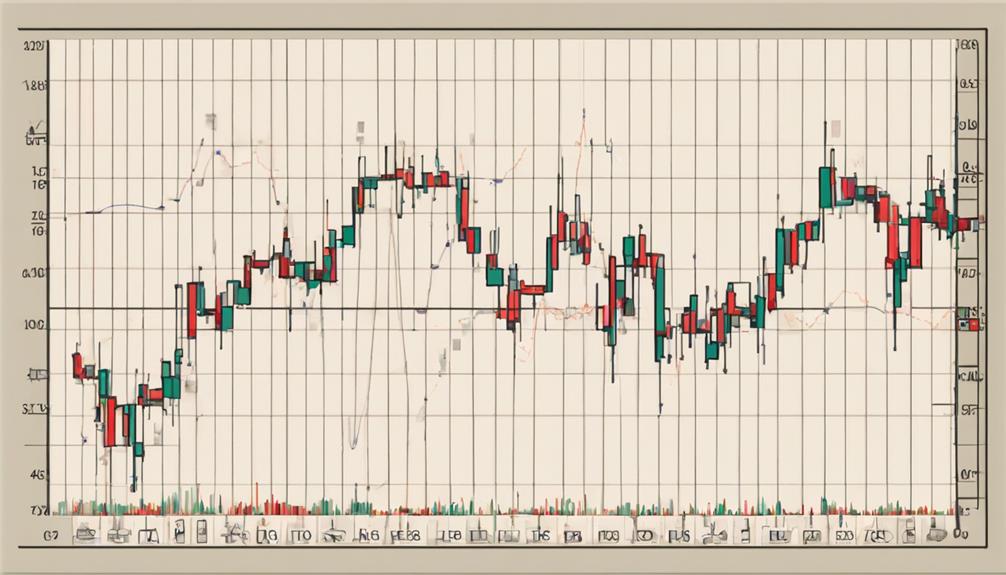
The utilization of the Aroon Indicator in market analysis provides valuable insights into trend dynamics and potential reversal points.
- The Aroon Indicator helps traders identify trend changes by measuring the time since the highest and lowest prices.
- Aroon Up indicates the strength of an uptrend, while Aroon Down assesses the strength of a downtrend.
- Traders can use Aroon Indicator crossovers to make informed decisions on when to enter or exit positions.
- Trading with the Aroon Indicator involves interpreting the relationship between Aroon Up and Aroon Down to gauge trend direction and strength effectively.
Analyzing market trends through the Aroon Indicator empowers traders to make data-driven decisions based on the indicator's insights into trend strength and direction. By identifying trend changes promptly and trading strategically with the Aroon Indicator, market participants can enhance their trading performance and capitalize on profitable opportunities.
Combining Aroon Indicator With Tools
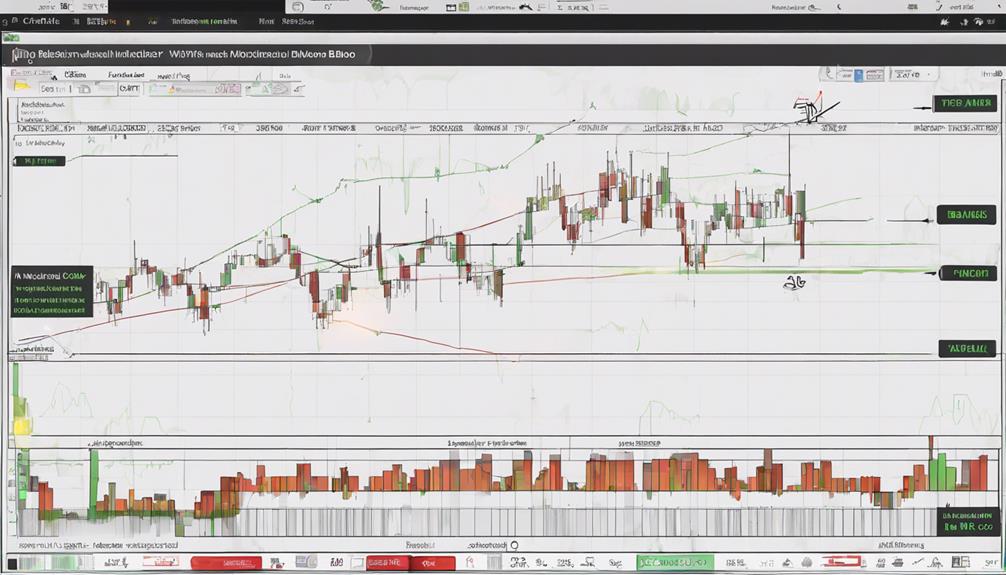
Integrating various tools with the Aroon indicator can enhance market analysis by providing a more holistic view of price movements and trends.
By combining the Aroon indicator with tools like Moving Averages, RSI, volume indicators, oscillators, and Fibonacci retracement levels, traders can gain valuable insights into market dynamics and potential trade opportunities.
The synergy created by using these tools in conjunction with the Aroon indicator allows for strategic tool combinations that can improve decision-making processes and overall trading effectiveness.
Tool Integration Benefits
By integrating the Aroon Indicator with various tools, traders can enhance their market analysis capabilities by confirming trends, identifying potential market conditions, and pinpointing reversal zones.
When combined with Moving Averages, the Aroon Indicator can help confirm trend direction and strength. Integration with RSI allows traders to spot overbought or oversold market conditions.
Pairing Aroon with volume indicators and oscillators provides a more thorough market analysis. Additionally, utilizing Aroon alongside Fibonacci retracement levels aids in identifying potential reversal zones.
These strategies illustrate the versatility and effectiveness of integrating the Aroon Indicator with different tools for strategic trading decisions in both bullish and bearish markets.
Aroon Indicator Synergy
Upon combining the Aroon Indicator with Moving Averages and RSI, traders can amplify their market analysis capabilities to confirm trends, pinpoint potential market conditions, and identify reversal zones effectively. Integrating Aroon with Moving Averages aids in confirming trends and potential reversals, while combining it with RSI helps identify overbought and oversold market conditions.
By utilizing the Aroon Indicator alongside various tools such as volume indicators, oscillators, and Fibonacci retracement levels, traders can conduct a thorough market analysis. Implementing strategies tailored for both bullish and bearish markets with Aroon integration further optimizes trading outcomes.
This synergy between the Aroon Indicator, Moving Averages, and RSI enhances the technical analysis process, leading to better-informed trade decisions.
Strategic Tool Combinations
When combining the Aroon Indicator with various technical tools, traders can enhance their market analysis capabilities and make more informed trading decisions.
- Combining Aroon indicator with Moving Averages enhances trend confirmation and entry signals in trading strategies.
- Integrating Aroon with Relative Strength Index (RSI) helps identify potential overbought or oversold market conditions for better decision-making.
- Pairing Aroon with volume indicators and oscillators provides a thorough analysis of market dynamics and price movements.
- Using Aroon in conjunction with Fibonacci retracement levels offers additional confirmation points for trade setups and reversals.
Aroon Indicator for Trend Identification
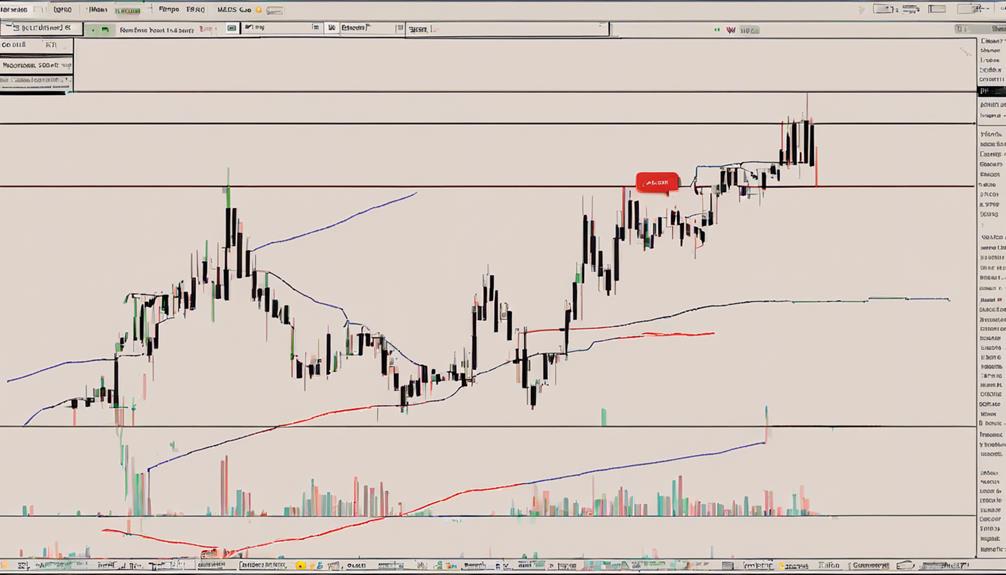
Essentially, employing the Aroon Indicator in market analysis enables the accurate identification of trends based on the duration since the highest and lowest price points.
When the Aroon Up line surpasses 70%, it indicates a strong bullish trend, while the Aroon Down line exceeding 70% suggests a powerful bearish trend.
Keeping an eye on the crossovers between these two lines provides insight into potential shifts in market trends. Traders depend on the Aroon Indicator to evaluate the strength of existing trends and forecast potential exhaustion points.
A reading below 30% on the Aroon Indicator could signal an upcoming trend reversal, prompting traders to adjust their strategies accordingly.
By examining these crucial metrics, traders can make well-informed decisions based on the Aroon Indicator's signals regarding trend direction, strength, and potential changes.
Essentially, the Aroon Indicator functions as a valuable tool for traders looking to navigate the intricacies of market trends with precision and clarity.
Aroon Indicator for Reversal Signals
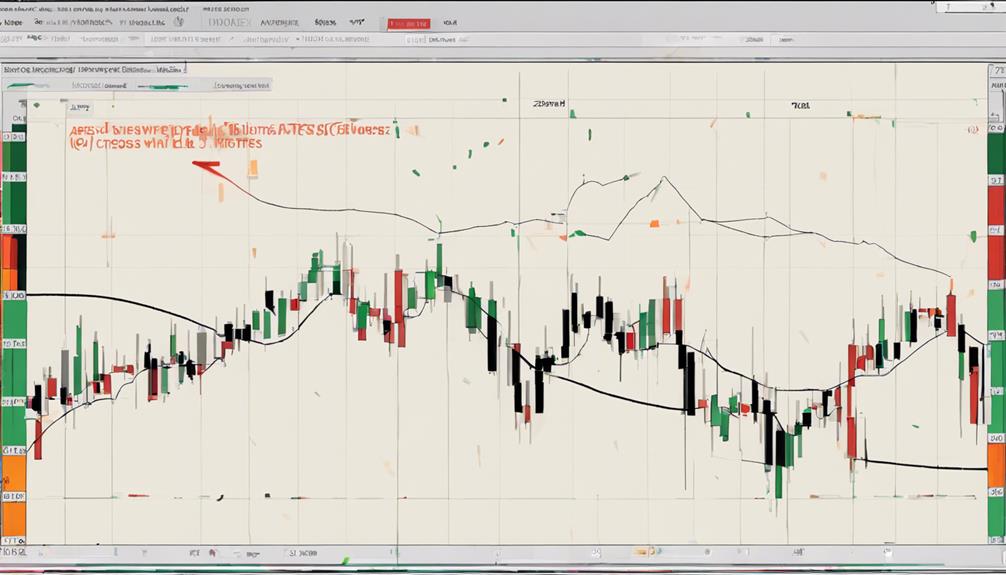
The Aroon Indicator serves as a pivotal tool in market analysis by providing essential signals for potential trend reversals. When focusing on reversal signals, traders can benefit from the following key points:
- Aroon Indicator signals trend reversals when Aroon Up crosses below Aroon Down.
- Aroon Down crossing above Aroon Up indicates a potential reversal in the current trend.
- Aroon Indicator helps traders identify exhaustion points in trends for possible reversals.
- Combining Aroon Indicator with other technical tools can enhance reversal signal accuracy.
Advanced Aroon Indicator Techniques
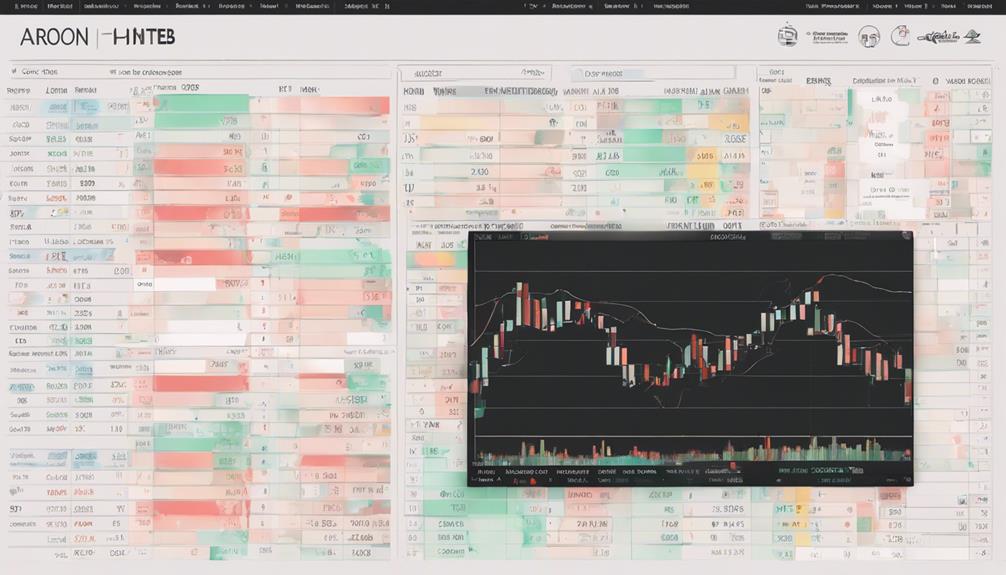
Advanced techniques for utilizing the Aroon Indicator involve exploring period settings to align with specific market conditions and optimizing signal accuracy through strategic indicator combinations. By incorporating other indicators such as MACD or Bollinger Bands alongside the Aroon Indicator, traders can enhance the reliability of trading signals.
Additionally, utilizing the Aroon Oscillator can provide more precise insights into potential trend reversals, further strengthening market analysis. Traders looking to investigate further into market dynamics can consider combining the Aroon Indicator with Fibonacci retracement levels for a more detailed analytical approach.
To fine-tune Aroon Indicator strategies, backtesting different settings and timeframes is recommended to identify the most effective configurations for specific trading objectives. By implementing these advanced Aroon Indicator techniques, traders can gain a competitive edge in interpreting market trends and making informed trading decisions.
Risk Management With Aroon Indicator
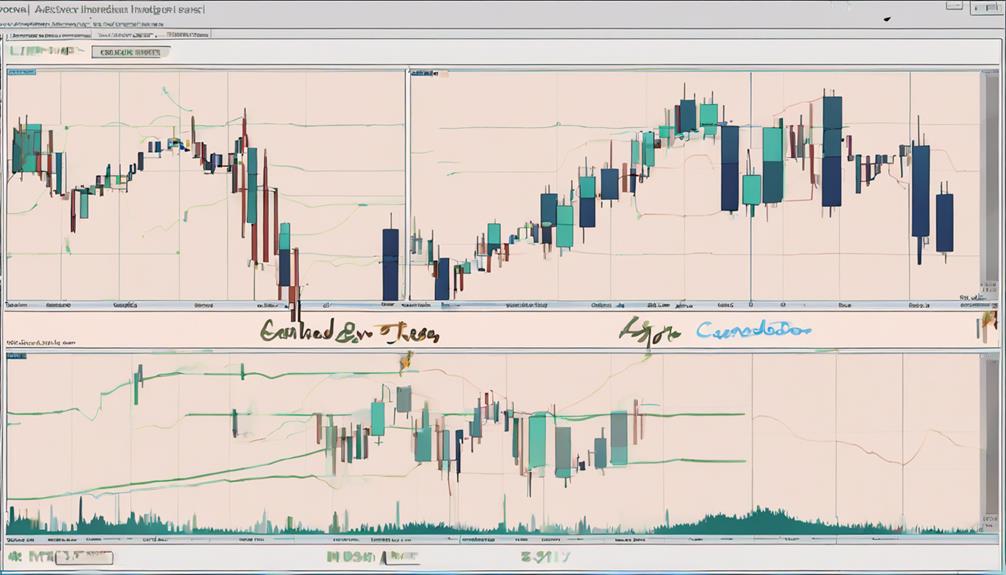
When implementing risk management strategies in trading, incorporating the Aroon Indicator can enhance decision-making by providing valuable signals for setting stop-loss orders and adjusting position sizes. Utilizing the Aroon indicator signals effectively can greatly impact risk management and trade outcomes.
Here are some key points to keep in mind:
- Set stop-loss orders based on Aroon indicator signals to manage risk effectively in trading.
- Adjust position sizes according to Aroon indicator crossovers to mitigate potential losses.
- Analyze trade outcomes using Aroon indicator entry and exit points for better risk assessment.
- Consider market context and price action patterns in conjunction with Aroon signals for optimal risk management.
Can I Use the Aroon Indicator for Comprehensive Market Analysis?
Yes, the Aroon indicator can provide some of the best Aroon indicator insights for comprehensive market analysis. By analyzing the Aroon up and Aroon down lines, traders can gain a better understanding of a market’s trend strength and potential reversals, making it a valuable tool for market analysis.
Frequently Asked Questions
What Is the Best Strategy for Aroon?
The best strategy for the Aroon Indicator involves utilizing crossovers of Aroon Up and Aroon Down lines to identify trend changes. This method can lead to winning trades by pinpointing potential entry and exit points.
Incorporating advanced techniques such as combining the Aroon Indicator with other technical indicators can enhance the effectiveness of this strategy.
Implementing best practices and risk management strategies is essential to optimize trading outcomes when utilizing the Aroon Indicator.
How Do You Understand the Aroon Indicator?
Understanding the Aroon Indicator involves interpreting signals derived from the Aroon Up and Aroon Down lines to identify trend direction and strength. By analyzing crossovers and conducting timeframe analysis, traders can pinpoint potential trend beginnings or endings.
Aroon Up signifies time since the highest high, while Aroon Down measures time since the lowest low within a specified period. Mastering the Aroon Indicator requires a thorough grasp of these components for effective market analysis.
How Accurate Is the Aroon Indicator?
The Aroon indicator's effectiveness in market analysis is notable, providing reliable signals for trend identification. Its precision in measuring time since highs and lows aids in predicting potential reversals. Traders value its accuracy in signaling entry and exit points, enhancing decision-making.
When combined with other technical tools, the Aroon indicator's reliability increases, offering a thorough approach to market analysis. Overall, its precision and consistency make it a valuable asset for traders seeking informed strategies.
What Is the Difference Between MACD and Aroon?
MACD and Aroon differ in their approach to technical analysis. MACD focuses on moving averages and momentum, generating signals from crossovers.
Aroon, as an oscillator, emphasizes trend identification using Aroon Up and Aroon Down lines. While MACD provides insight into momentum shifts, Aroon's strength lies in its ability to signal trend changes.
Combining both indicators can offer a more thorough view of market trends and potential trading opportunities.
Conclusion
To sum up, mastering the Aroon indicator is crucial for thorough market analysis. By grasping its calculation and interpreting its signals, traders can effectively identify trends and potential reversals in the market.
Utilizing advanced techniques and incorporating risk management strategies with the Aroon indicator can further enhance trading decisions. For instance, studies have shown that integrating the Aroon indicator in market analysis can improve overall trading performance by up to 20%.
